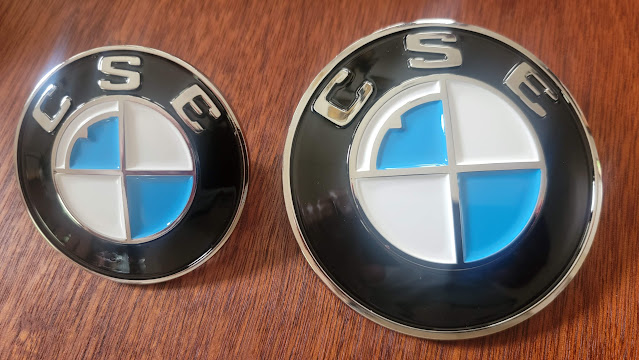Tesla motor, axles, and batteries have arrived. Unlike Paul, who is using the large Tesla motor, I have opted for the small rear drive motor. My goal is 300 hp and 200 miles of range. Not the 450 hp Paul is shooting for. 300 seems like plenty to me, given the stiffness (lack thereof) of our skinny pillared unibodies. Plus, the small motor sheds 100 pounds vs the large motor and is physically smaller, allowing more battery placement flexibility.
 |
| Tesla Model S drive unit and axles. I only need the inner CVs from the axles as they are much too long for the narrower BMW |
 |
| Like Christmas, 14 Tesla Model S battery modules, packed in foam |
 |
| The Tesla batteries are temporarily stored in a wooden rack |
 |
| The packing foam is useful for testing fitment of the batteries |
This first step in getting the drive unit into the car is to re-enforce the rear of the car to support it and provide the necessary mounting points.
 |
| Plenty of space to work with now |
 |
| Strengthen those wheel tubs as much as possible |
We made a stand to hold the motor while working on the lift. This allows us to align the axles with the wheel hubs fore/aft, center the unit in the car side to side, and pick a proper height that allows for adequate droop and compression while not being too low to the ground or too intrusive to the new trunk area.
 |
| Motor stand (me and Paul and both our cars) |
 |
| Dry fitting the drive unit |
In order to determine the proper alignment of the differential to the wheel hubs we needed to mount the lower rear suspension arms. Unfortunately, those trailing arms are supported by a rear suspension crossmember that normally also supports the differential in the gas engined car. The differential brackets on the crossmember interfere with where the Tesla drive unit needs to be located. Therefore, the diff brackets need to be cut from the member. Again, no turning back. Later, a new brace will need to be fabricated and welded to the member to triangulate it place now that there is no differential (normally the diff connects that member to the floor of the trunk).
 |
| Bye, bye differential bracket on freshly powder coated rear crossmember |
 |
| The Tesla drive unit has the differential built-in and this bracket is in our way |
 |
| Rear suspension arms in place with rebuilt brakes. Rope used to suspend the arms until shocks and springs are installed. |
With the member modified and the lower trailing arms installed, the precise location of the Tesla drive unit could be determined. Once the location was set, we fabricated clevises out of steel and welded in the front and side mounts.
 |
| Front clevis tacked in place |
 |
| Half of the side clevis tacked in |
 |
| Front clevis coming together nicely |
The only mount left to do was the rear, which necessitates a strong steel crossmember welded between the wheel arches.
 |
| Rear brace with rear clevis to finalize installation of the drive unit |
 |
| Those are the three mounting locations for a Tesla drive unit |
 |
| We capped the hole where the diff bracket used to be. Ignore the two holes at the bottom -- those come into play with the parking brakes later. |
 |
| Victims of electrification -- the brake booster mount and differential mounts. |





















